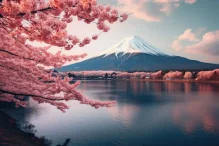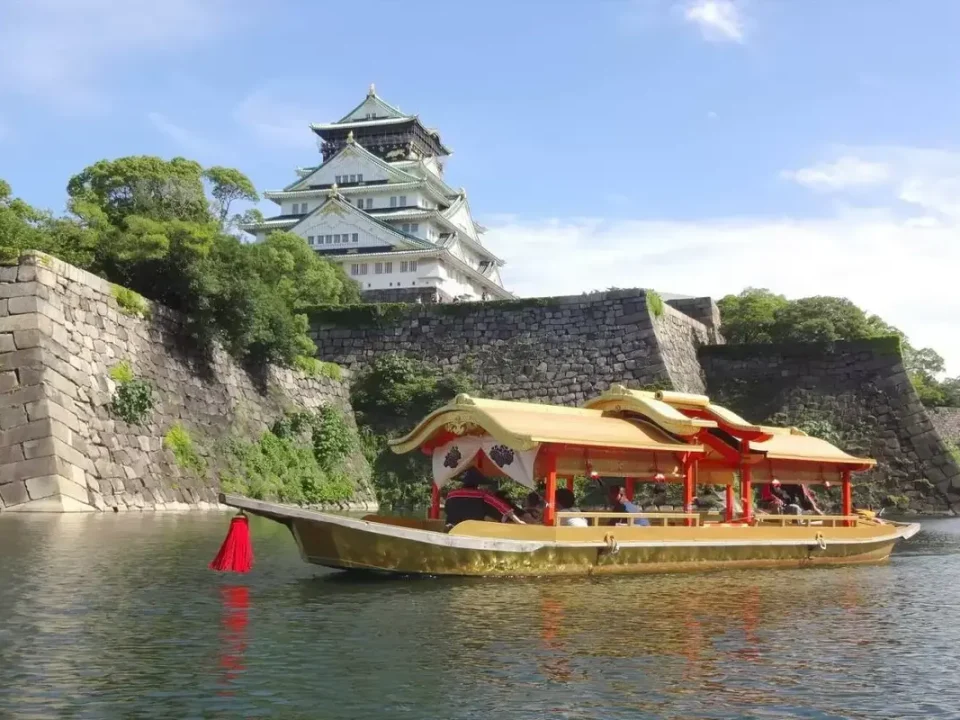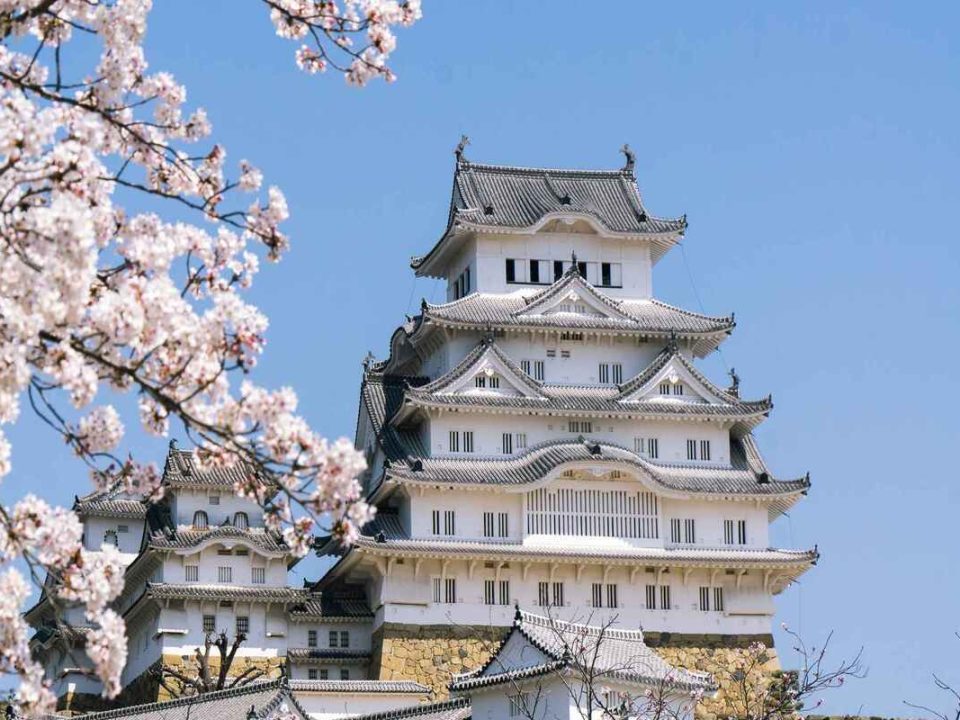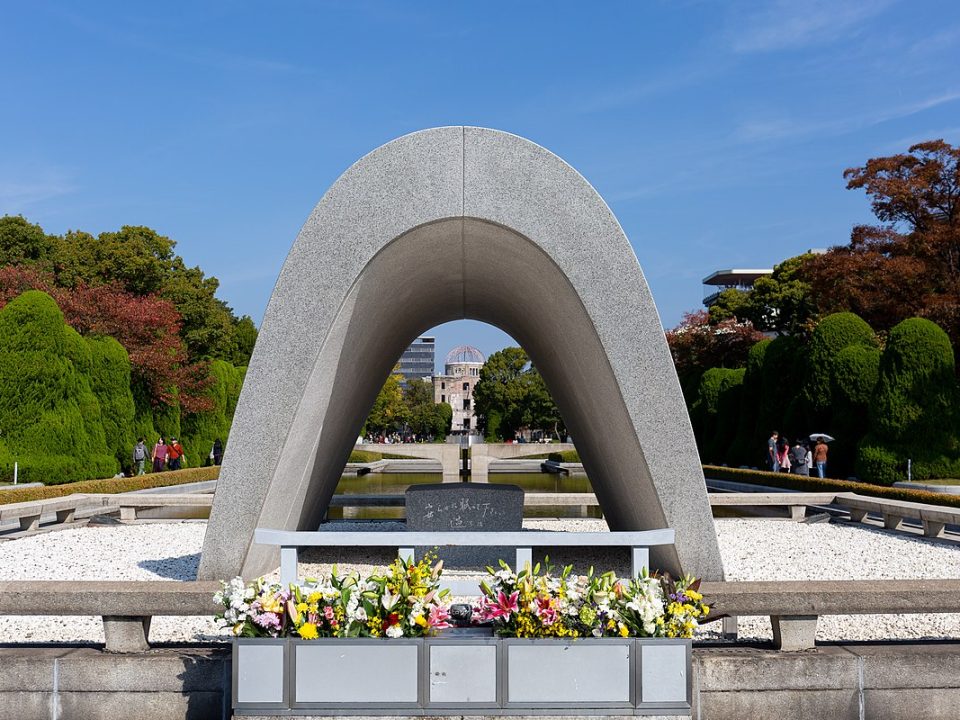Mount Fuji: Japan’s Iconic Peak
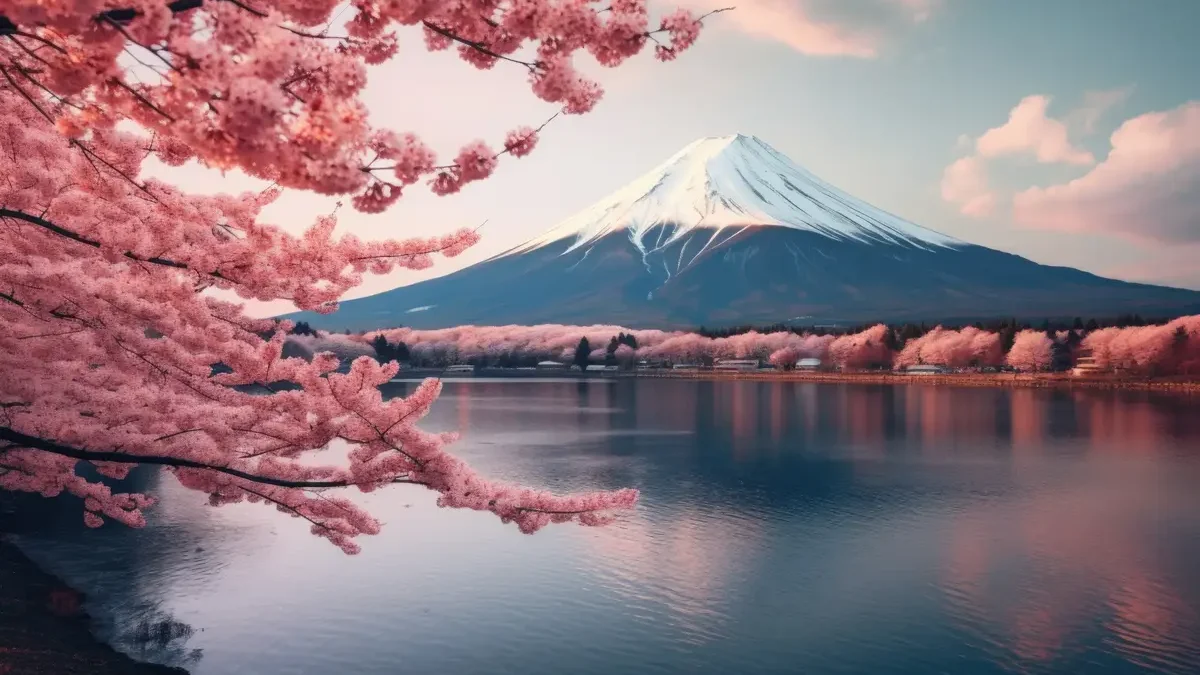
Mount Fuji: Japan’s Iconic Peak
Mount Fuji, or Fuji-san as it is affectionately known in Japan, is the country’s highest and most iconic mountain. Standing at 3,776 meters (12,389 feet), Mount Fuji is not only a symbol of Japan but also a place of cultural, spiritual, and natural significance. This comprehensive guide provides tourists with all the information they need to plan a visit to Mount Fuji, including its history, cultural importance, climbing routes, nearby attractions, and practical tips.
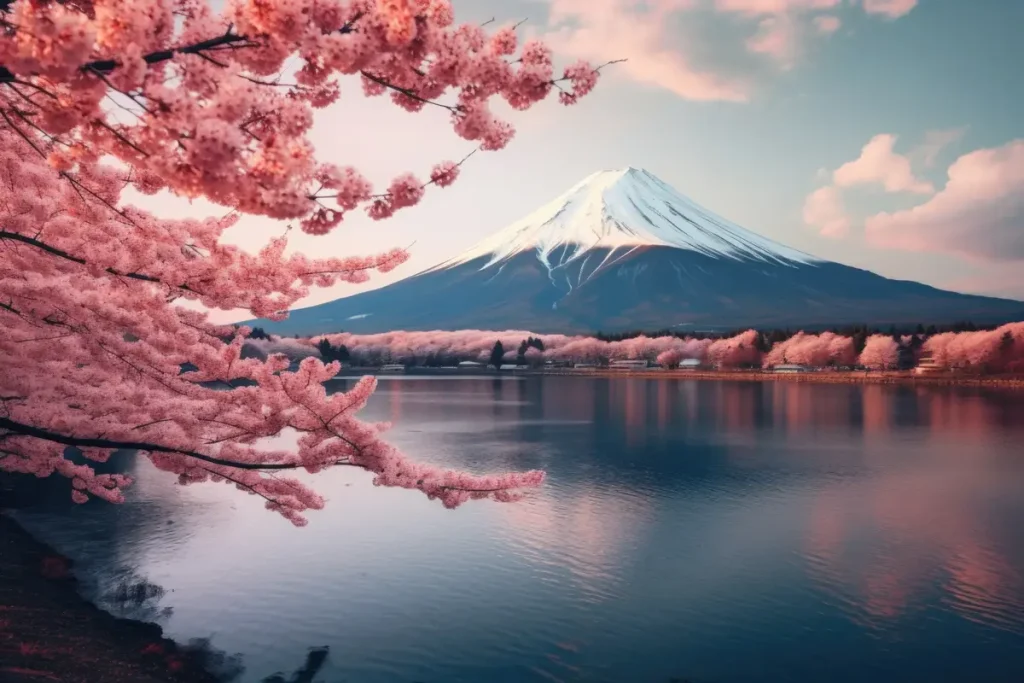
Historical and Cultural Significance
Ancient Origins: Mount Fuji is a stratovolcano that has been active for over 100,000 years. Its current shape was formed by several volcanic eruptions, the most recent of which occurred in the early 18th century. The mountain’s symmetrical cone has become a symbol of beauty and tranquility.
Cultural Importance: Mount Fuji holds a special place in Japanese culture and religion. It has been revered as a sacred mountain since ancient times and is associated with various Shinto deities and Buddhist practices. The mountain is often depicted in Japanese art and literature, symbolizing both the power and serenity of nature.
UNESCO World Heritage Site: In 2013, Mount Fuji was designated a UNESCO World Heritage Site for its cultural significance. The designation includes 25 sites of cultural interest around the mountain, such as shrines, pilgrim routes, and historical lodges, highlighting its importance as a place of pilgrimage and inspiration.
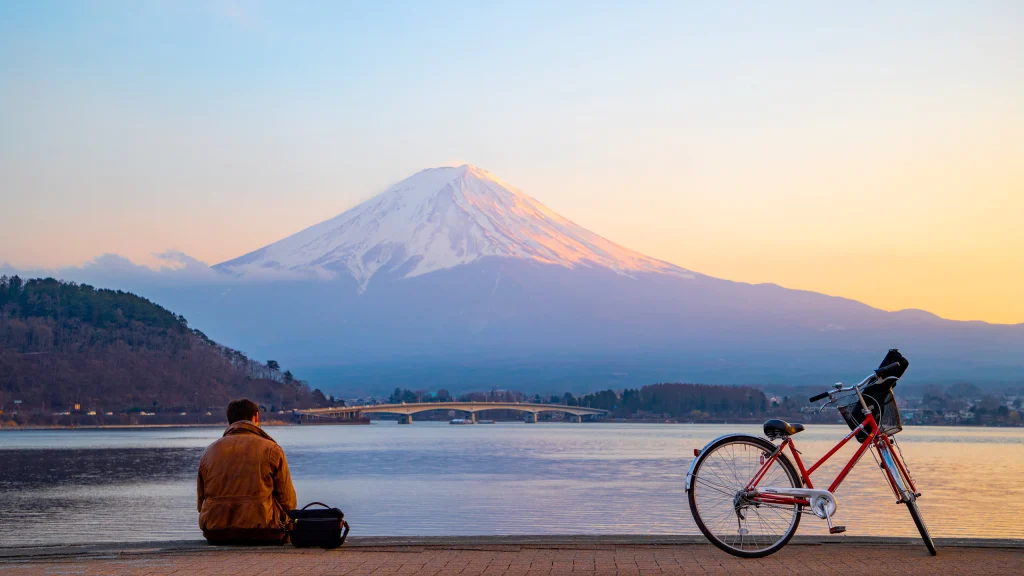
Climbing Mount Fuji
Climbing Season: The official climbing season for Mount Fuji is from early July to early September. During this period, the weather is relatively mild, and the mountain huts and facilities are open to accommodate climbers. Climbing outside this season is dangerous due to harsh weather conditions and limited services.
Climbing Routes: There are four main routes to the summit of Mount Fuji, each varying in difficulty and popularity:
- Yoshida Trail: The most popular route, starting from the Fifth Station on the Yamanashi side. It offers numerous mountain huts and facilities, making it suitable for beginner climbers.
- Subashiri Trail: This route starts from the Subashiri Fifth Station and merges with the Yoshida Trail at the Eighth Station. It is less crowded and offers a more forested path.
- Gotemba Trail: Starting from the Gotemba Fifth Station, this is the longest and least crowded route. It is recommended for experienced climbers due to its length and difficulty.
- Fujinomiya Trail: The shortest route to the summit, starting from the Fujinomiya Fifth Station. It is steep and rocky, suitable for climbers looking for a challenging ascent.
Preparation and Equipment: Proper preparation is essential for a safe and enjoyable climb. Here are some tips:
- Fitness: Ensure you are in good physical condition. The climb is strenuous and requires stamina.
- Clothing: Wear layered clothing to adapt to varying temperatures. A waterproof jacket, thermal layers, and gloves are essential.
- Footwear: Sturdy, comfortable hiking boots with good ankle support are necessary.
- Supplies: Carry enough water, high-energy snacks, a headlamp, and a first aid kit. A walking stick can also be helpful.
- Accommodation: Book a stay at a mountain hut in advance, especially if you plan to watch the sunrise from the summit.
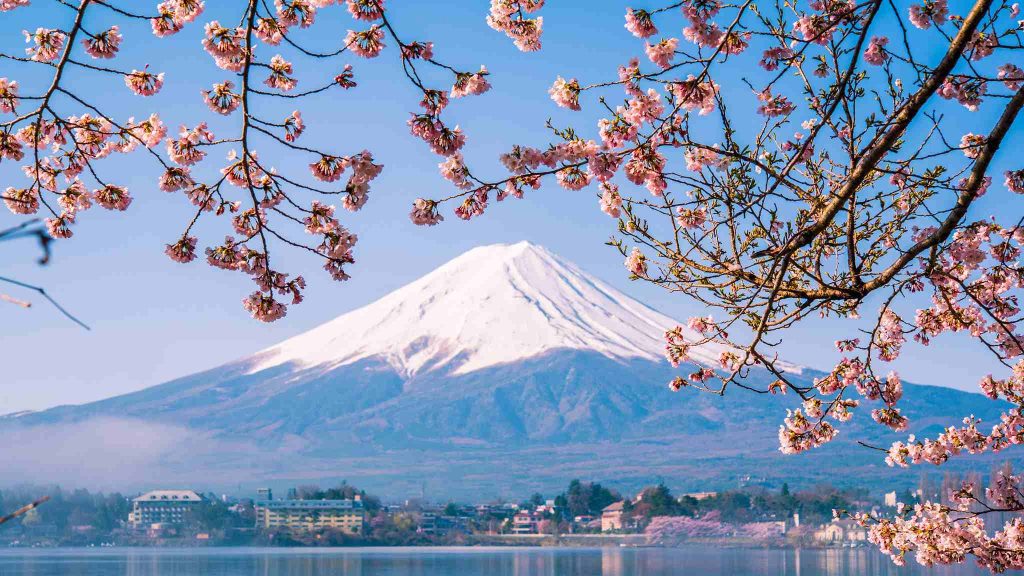
Experiencing Mount Fuji
Fifth Stations: The Fifth Stations are the starting points for most climbs and offer various amenities, including shops, restaurants, and rest areas. They provide a taste of the mountain’s culture and atmosphere even for those not planning to climb.
Sunrise (Goraiko): Watching the sunrise from the summit of Mount Fuji is a profound experience, known as “Goraiko.” Climbers often start their ascent in the evening to reach the top by dawn. The view of the sun rising above the clouds is truly breathtaking.
Craters and Peaks: The summit of Mount Fuji features several craters and secondary peaks, such as Kengamine, the highest point. Walking around the crater (Ohachi-Meguri) is a popular activity, offering stunning views of the surrounding landscape.
Nearby Attractions
Fuji Five Lakes (Fujigoko): Located at the northern base of Mount Fuji, the Fuji Five Lakes area includes Lake Kawaguchi, Lake Yamanaka, Lake Sai, Lake Shoji, and Lake Motosu. This region offers beautiful views of Mount Fuji, hot springs, and outdoor activities such as boating, fishing, and hiking.
- Lake Kawaguchi: The most accessible and developed of the five lakes, it features numerous resorts, hot springs, and the famous Chureito Pagoda, which provides a classic view of Mount Fuji.
- Lake Yamanaka: The largest of the five lakes, ideal for water sports and camping.
- Lake Motosu: Known for its clear waters and the view depicted on the Japanese 1,000 yen note.
Fujiyoshida Sengen Shrine: Located at the northern base of Mount Fuji, this shrine is dedicated to the Shinto goddess Konohanasakuya-hime. It serves as the traditional starting point for pilgrims climbing Mount Fuji. The shrine’s grounds are serene and offer a glimpse into the spiritual significance of the mountain.
Aokigahara Forest: Also known as the Sea of Trees, Aokigahara is a dense forest located on the northwestern flank of Mount Fuji. It is known for its scenic beauty and unique geological features, such as lava caves. Guided tours are available to explore the forest’s mysterious landscape.
Fuji-Q Highland: An amusement park located near the base of Mount Fuji, Fuji-Q Highland is famous for its thrilling roller coasters and attractions themed around popular anime and manga. The park offers spectacular views of Mount Fuji, making it a fun destination for families and thrill-seekers.
Oshino Hakkai: A traditional village located between Lake Kawaguchi and Lake Yamanaka, Oshino Hakkai is known for its eight crystal-clear ponds fed by the melted snow from Mount Fuji. The village offers a picturesque setting with traditional thatched-roof houses and beautiful gardens.
Practical Tips for Visiting Mount Fuji
Best Time to Visit: While Mount Fuji is accessible year-round, the best time to visit for climbing is during the official climbing season (early July to early September). For sightseeing and enjoying the surrounding attractions, spring (April to June) and autumn (September to November) offer pleasant weather and stunning views.
Getting There: Mount Fuji is accessible from major cities like Tokyo, Yokohama, and Osaka by train, bus, or car. The most common approach is via the Fuji Subaru Line, which leads to the Fifth Station of the Yoshida Trail.
Transportation: Buses run regularly from Tokyo’s Shinjuku Station to the Fifth Stations during the climbing season. For those visiting outside the climbing season or exploring the Fuji Five Lakes area, renting a car provides greater flexibility.
Accommodation: There are various accommodation options around Mount Fuji, including hotels, ryokan (traditional Japanese inns), and mountain huts. Booking in advance is recommended, especially during peak seasons.
Respect Local Customs: Mount Fuji is a sacred site in Japanese culture. Respect the natural environment, follow designated trails, and adhere to local guidelines and customs. This includes taking all trash with you and being mindful of noise levels, especially in sacred areas.
Safety Precautions: Always check weather conditions before starting your climb and be prepared for sudden changes in weather. Altitude sickness can be a concern; ascend slowly and stay hydrated. In case of an emergency, know the location of the nearest mountain hut or shelter.
Unique Features and Charming Aspects of Mount Fuji
Iconic Symmetry: Mount Fuji’s perfectly symmetrical cone is one of the most recognizable natural landmarks in the world. Its striking appearance has inspired countless artists, poets, and travelers.
Seasonal Beauty: Mount Fuji’s appearance changes with the seasons. In winter, its snow-capped peak contrasts beautifully with the clear blue sky. In spring, the mountain is often framed by blooming cherry blossoms, while autumn brings vibrant foliage.
Cultural Symbolism: Mount Fuji is deeply ingrained in Japanese culture and spirituality. It is a subject of worship, artistic inspiration, and national pride. The mountain represents both the power of nature and the spiritual journey of human beings.
Natural Diversity: The region around Mount Fuji offers a diverse range of natural attractions, from the serene lakes and lush forests to the unique volcanic landscape. Each area provides a different perspective of the mountain’s beauty.
Pilgrimage Experience: Climbing Mount Fuji is not just a physical challenge but also a spiritual journey. The traditional pilgrimage routes, shrines, and rituals add a profound cultural and spiritual dimension to the experience.

Conclusion
Mount Fuji, with its majestic peak and profound cultural significance, is truly a symbol of Japan. From the thrill of climbing to the serenity of its surrounding landscapes, the mountain offers a unique and unforgettable experience for travelers.
As a must-visit destination, Mount Fuji invites you to explore its natural beauty, immerse yourself in its cultural heritage, and embark on a journey of discovery and inspiration. Whether you are climbing to the summit, enjoying the scenic views, or exploring the nearby attractions, Mount Fuji provides a captivating experience that captures the essence of Japan.
Plan your visit to Mount Fuji, embrace its unique features and enchanting atmosphere, and discover why it remains one of the most beloved and iconic destinations in the world. From its stunning symmetry and seasonal beauty to its rich cultural heritage, Mount Fuji offers a magical journey into the heart of Japan.
-
Mount Fuji: Japan’s Iconic Peak
Mount Fuji: Japan’s Iconic Peak Mount Fuji, or Fuji-san as it is affectionately known in Japan, is the country’s highest and most iconic mountain. Standing at […]
thecoins24 Bitcoin News Cryptocurrency airdrop theforex24 Forex News Aypa Group Aypa Website developer Aypa SEO
italyeducation تحصیل در ایتالیا تحصیل رایگان در ایتالیا پذیرش تحصیلی در ایتالیا دانشگاه های ایتالیا بورسیه تحصیلی ایتالیا Aypa Digital Marketing Forex Calculator

